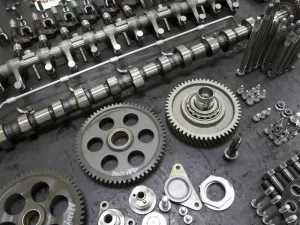Understanding Car Batteries – Types and Maintenance Tips

Car batteries are indispensable components to powering your engine and supporting its electrical accessories, but not all batteries are created equal. By understanding different battery types and following proper maintenance practices, you’ll get maximum use out of its lifespan.
As your starting point, first determine your battery’s group size (listed either on the battery itself or within your vehicle’s service manual). This information outlines dimensions, terminal locations and voltage (6V or 12V).
Type-Lead Acid
Lead-acid batteries are one of the primary types used in cars. Their primary function is providing an initial burst of energy for starting, and then being charged by alternators as the vehicle runs. A typical starter or “flooded” lead acid battery typically features six cells with thin lead electrodes immersed in liquid sulfuric acid for chemical reaction that produces voltage; typically about 12.6V when fully charged.
As soon as a flooded battery is discharged, its electrolyte components begin to sulfate and harden on its lead plate, preventing any attempts at recharge. While some companies claim they can reverse sulfation using pulse charging techniques, no independent tests have proven this claim to work reliably. One way to avoid sulfation altogether is allowing an AGM or gel battery to charge as soon as it has been discharged – hence their popularity for consumer applications.
Absorbent Glass Mat (AGM)
As opposed to conventional lead-acid batteries which contain free-flowing electrolyte, AGM battery cells utilize glass mats which draw in electrolyte through battery plates, creating an AGM battery’s superior depth-of-discharge capabilities, longer lifespan and increased power output – qualities which make these batteries perfect for vehicles such as ATVs, snow mobiles and UTVs with higher electrical demands or seasonally used vehicles such as snow mobiles or UTVs.
AGM batteries’ fiberglass mats make them resistant to vibrations. Traditional lead-acid batteries are highly vulnerable when exposed to vibrations; AGM batteries do not respond as readily – even under hard shaking!
AGM batteries offer another major advantage with their sealed construction. Unlike traditional lead-acid batteries that must be installed right-side up to prevent acid spillage, AGM batteries can be mounted any which way around without risk of acid spillage; this broadens their use while saving space in your engine compartment or RV. As such, AGMs have become the go-to choice of high-powered motorcycles and racing leagues such as NASCAR.
Enhanced Flooded Battery (EFB)
As cars become more technologically advanced, their power requirements increase significantly. The battery is responsible for starting the car and powering all its electronic equipment; EFB and AGM batteries have been developed specifically to meet these demands.
EFB batteries are flooded lead-acid batteries designed for start-stop vehicles that offer superior cycling capacity and charge recovery compared to standard models. Their unique construction allows them to withstand multiple discharge cycles and recharges without significant performance degradation, providing an ideal solution without significant performance degradation over time.
Modern vehicles typically come equipped with AGM or EFB batteries installed. When replacing them, it’s crucial not to downgrade these premium batteries as doing so could compromise the start-stop system and shorten its lifespan significantly. Banner offers an extensive selection of AGM/EFB replacement batteries – shop today to find one perfect for your vehicle!
Lithium-Ion
Lithium-ion batteries differ significantly from 12-volt lead-acid batteries in that they’re built specifically with energy storage in mind, unlike their 12-volt counterparts used for passenger cars. Lithium-ion batteries use an electrolyte that contains lithium ions (Li+) as an energy source and electrodes made from graphite, nickel, cobalt or any combination thereof; all materials must be mined, which can have potentially environmental repercussions; half of world cobalt production comes from Democratic Republic of Congo while most lithium can be found within Chile-Argentina-Bolivia ‘lithium triangle’ between Chile-Argentina-Bolivia.
Lithium battery charging involves moving Li+ ions back and forth from cathode to anode many times over, providing energy relative to the weight and size of the battery – this process allows electric vehicle batteries to deliver such impressive driving range. Furthermore, lithium is often faster than traditional lead-acid batteries when charging, making lithium an increasingly common standard choice in EVs.






